Gasteria Care: Growing These Spotted Succulents Indoors and Out
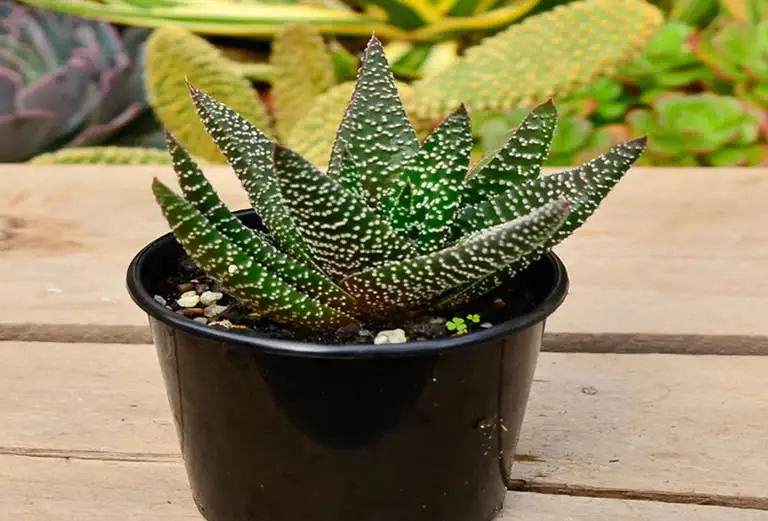
Gasteria may not be the flashiest succulent in the room, but it quietly earns its place with distinctive spotted leaves, slow growth, and hardy, fuss-free care. Often called “ox tongue” for its thick, elongated leaves, Gasteria is an excellent option for anyone looking for a compact, low-maintenance plant with subtle personality.
These succulents are well-suited to life indoors but also thrive in mild outdoor climates with the right setup. Whether you’re keeping a single pot on your windowsill or incorporating them into your succulent garden, Gasteria brings a gentle charm and solid resilience to your space.
Table of Contents
- What Makes Gasteria Unique
- Light Requirements: Shade-Loving Succulent
- Watering: Deep, Occasional Drinks
- Soil and Potting: Fast-Draining Is Essential
- Fertilizer: Light Feeding During Growth
- Pruning and Maintenance: Minimal Effort
- Best Spot in the Home
- Outdoor Gasteria Care
- Popular Gasteria Varieties
- Common Problems and Fixes
- Final Thoughts
What Makes Gasteria Unique
Gasteria is a genus of small, slow-growing succulents native to South Africa, where they typically grow in shaded, rocky areas.
Their thick, tongue-shaped leaves often display rough textures, mottled spotting, or striped patterns, and many species grow in a neat, two-ranked fan before eventually spiraling as they mature.
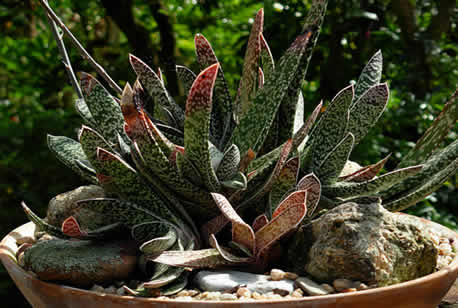
The name “Gasteria” comes from the Latin word gaster, meaning “stomach,” referring to the swollen, belly-like shape of the flowers.
These plants belong to the Asphodelaceae family, closely related to Haworthia and Aloe.
They’re known for their ability to tolerate low light, making them one of the best succulents for shady spots indoors.
Light Requirements: Shade-Loving Succulent
Unlike many succulents, Gasteria doesn’t need intense sunlight to thrive.
In fact, it prefers bright, indirect light or even partial shade. A north- or east-facing window is often perfect.
Too much direct sun—especially strong afternoon light—can cause the leaves to turn red or develop scorched spots.
If you move your Gasteria outdoors for the summer, give it a shaded or dappled sun location to prevent damage.
Gasteria is an ideal succulent for low-light rooms, shaded balconies, or even offices with fluorescent lighting.
Watering: Deep, Occasional Drinks
Like other succulents, Gasteria prefers to dry out completely between waterings.
Use the soak and dry method: water thoroughly, then wait until the soil is bone dry before watering again.
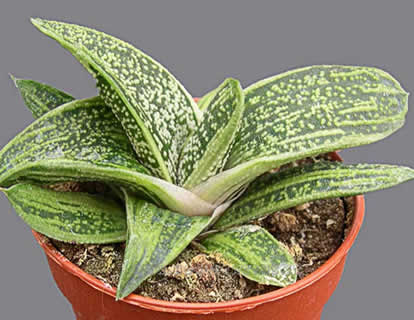
In the spring and summer, this might mean watering every 10–14 days.
In fall and winter, reduce watering to once every 3–4 weeks.
Avoid letting water sit in the crown of the plant, which can lead to rot.
And always check the soil before watering—overwatering is the most common cause of trouble.
Soil and Potting: Fast-Draining Is Essential
Gasteria needs well-draining soil, just like its aloe cousins.
Choose a cactus or succulent mix, or blend your own with:
-
2 parts potting soil
-
1 part perlite or pumice
-
1 part coarse sand
Avoid heavy, moisture-retaining mixes.
Always use pots with drainage holes, and consider terracotta for even faster moisture loss.
Repot every 2–3 years or when the plant outgrows its current home.
Spring is the best time to repot.
Fertilizer: Light Feeding During Growth
Gasteria grows slowly, so it doesn’t need much fertilizer.
Feed lightly once a month during spring and summer using a balanced liquid succulent fertilizer diluted to half strength.
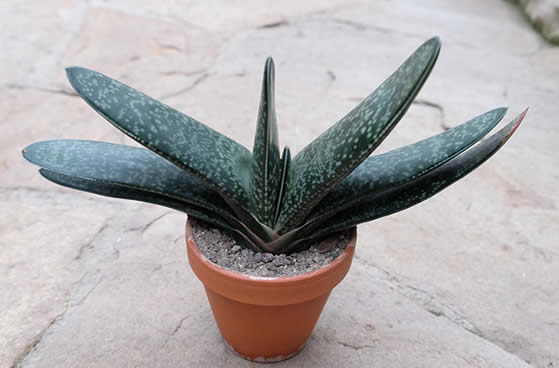
Look for an NPK around 5-10-5 like this one, or 10-10-10 like this one.
Avoid fertilizing in the fall and winter when the plant is dormant.
Too much fertilizer can cause leggy growth and root damage—less is more.
Pruning and Maintenance: Minimal Effort
Gasteria requires almost no pruning.
Just remove any dead or withered leaves at the base as they appear.
Wipe the leaves occasionally with a damp cloth to remove dust and allow the plant to photosynthesize more efficiently.
If your Gasteria becomes crowded with pups (offsets), you can separate them during repotting to encourage fresh growth or to propagate as we outlined in the article Gasteria Propagation: 3 Reliable Ways to Multiply This Low-Light Succulent.
Best Spot in the Home
Gasteria is perfect for offices, bedrooms, or low-light living spaces where other succulents may struggle.
It’s also a great choice for bathrooms with indirect light, thanks to its humidity tolerance.
Its slow growth and compact form make it ideal for desks, bookshelves, and windowsills.
Outdoor Gasteria Care
Gasteria can be grown outdoors in USDA zones 9–11 as long as it’s sheltered from intense sun and protected from frost.
-
Place in dappled shade or under taller plants to mimic its natural habitat.
-
Use sandy, fast-draining soil—raised beds or rock gardens are ideal.
-
Water only during dry spells and reduce or stop watering in the rainy season.
If you live in a cooler zone, bring your Gasteria indoors before temperatures drop below 40°F (4°C).
Popular Gasteria Varieties
Gasteria offers a variety of compact, patterned types that are perfect for collectors.
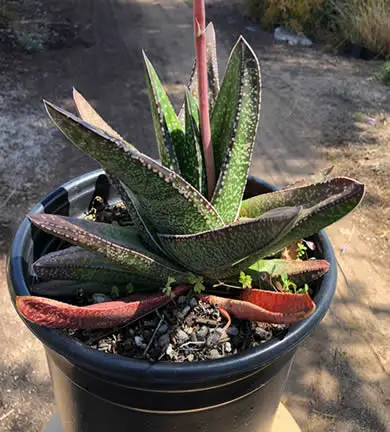
Some of the most popular include:
Gasteria ‘Little Warty’ – A hybrid with bumpy, dark green leaves and white spotting. Very compact and beginner-friendly.
Gasteria ‘Ox Tongue’ (Gasteria obliqua) – The classic form, with thick, leathery leaves and a two-ranked fan shape.
Gasteria bicolor – Known for its mottled leaves that form dense, flat rosettes. A reliable and hardy grower.
Gasteria ‘Flow’ – Features long, narrow leaves with strong contrast between green and white. Very sculptural.
Gasteria glomerata – A dwarf species with short, chubby leaves. Ideal for tiny pots and tight spaces.
Gasteria ‘Green Ice’ – A hybrid with broad, smooth leaves in soft green hues. Sleek and modern in appearance.
These varieties are commonly found at nurseries and online succulent shops, and they often hybridize easily with Haworthia and Aloe.
Common Problems and Fixes
Soft or mushy leaves
Usually caused by overwatering.
Allow soil to dry fully and reduce watering frequency.
Leaf tips turning red or brown
Often due to too much sun exposure.
Move the plant to a shadier spot with filtered light.
Leaves curling or wrinkling
A sign of underwatering or very low humidity.
Water thoroughly and adjust placement.
Pests (mealybugs, scale)
Rare but possible.
Wipe affected areas with rubbing alcohol and treat with neem oil if needed.
Slow or no growth
Completely normal for Gasteria.
This is a slow grower—be patient and don’t overfeed.
Final Thoughts
Gasteria is the quiet achiever of the succulent world—low-key, dependable, and surprisingly beautiful up close.
With its ability to tolerate low light and low effort, it’s a fantastic plant for beginners or anyone seeking a chill, compact succulent.
Keep it in bright indirect light, water only when dry, and feed lightly during the growing season.
Whether you choose a bold hybrid or a humble species, Gasteria will grow steadily—and stylishly—by your side.
Thanks for reading! I'm Michael — houseplant fanatic and your Pinterest plant guide.
Follow me on Pinterest for fresh updates 🌿



